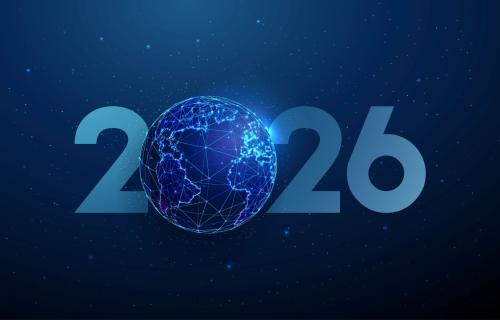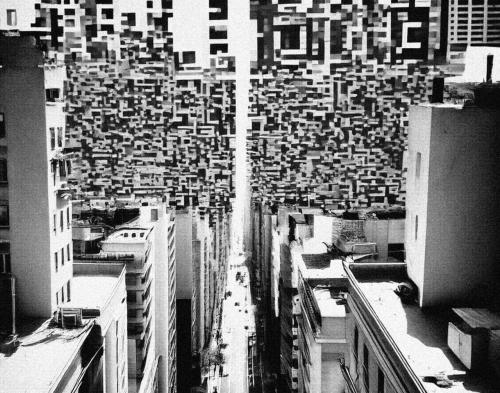In the past several years there has been intense discussion over the future of the electricity industry, centering on how existing utilities will adapt and evolve as they confront numerous transformational challenges.
A recent working paper from the Governance Studies program at Brookings examining the characteristics of the millennial generation offers some insights into this question. Millennials, or those born after 1982, will account for one-third of the adult population by 2020 and 75 percent of the workforce by 2025. Thus, what this group wants and how it behaves will be critically important for the future of utilities and the electricity sector broadly.
What millennials want
Of the many characteristics of the millennial generation assessed in the paper, three struck me as noteworthy for the electricity industry.
- First, in contrast to previous generations, millennials are socially conscious: they shop and buy products and services from entities that prioritize social causes that align with theirs, including the environment.
- Second, they distrust big companies: in one survey, 83 percent of millennials agreed with the statement that “there is too much power concentrated in the hands of a few big companies.”
- Third, this generation is more favorable to government regulation: in another survey, most millennials disagree with the statement that “government regulation of business usually does more harm than good.”
It’s not hard to see the potential impact on traditional utilities: this generation is more disposed to support clean energy, wants more choice in its energy decision-making, and may favorably view government intervention to achieve these goals.
More specifically, the millennial customer wants information, services and products that meet the criteria of the three “Cs”: cheap, convenient and cool. For a moment, let’s consider what “convenient” means. First and foremost, customers want information and services instantaneously and accessible anytime, anywhere. But, perhaps more importantly, they want personalization, packaging and sharing. Personalization refers to the ability to customize how they get their information and service. Packaging refers to the ability to access multiple products in one place. Finally, this generation loves to share: any service that allows sharing of information or the ability to collectively benefit is highly valued – just think of Twitter, iTunes, Facebook, YouTube and Uber.
What does this mean for the electricity sector?
These are exactly the main challenges confronting traditional utilities. Utilities are not used to personalizing their product for customers. Instead, they have provided electricity to essentially captive customers and have not had to win, retain or otherwise figure out what their customers want. Utilities have also not had to package their product with other distinct services or products to meet customer needs because they have largely focused on selling one product reliably and cheaply. In addition, sharing is not a traditional utility characteristic. As one municipal utility executive recently pointed out, “utilities love their assets and their territories,” suggesting that they are not inclined to partner with others to share their market.
Utilities who will thrive in the coming years are the ones who will find ways to understand and meet the needs and preferences of the millennial generation and especially the millennial customer. We already see signs of this. Utilities are well-placed to develop and utilize customer information, and the emergence of “data analytics” as a hot topic is reflective of utilities trying to figure out how to access and use – or “personalize” – customer information.
Utilities are also increasingly sharing their traditional business space by partnering to expand services. The Institute for Electric Innovation recently documented dozens of examples of utilities working with technology companies to meet customer needs at the industrial, commercial and residential levels. In another example of this trend, some utilities are partnering with solar companies to develop community solar projects for customers who might not otherwise have the ability to install solar technology on their rooftops.
Packaging is also a trend utilities may increasingly consider – where the utility serves as an “optimizer” or “integrator” (think bundling of services or functioning as a gateway for customers to a variety of services and technologies). Their potential competitors are already making steps in this direction: Google’s purchase of NEST and the latter’s acquisition of Dropcam are examples of combining electricity with home energy management services. Comcast’s venture with a retail electric supplier in Pennsylvania is an example of bundling electricity with cable, internet and telecom services.
Marketing to a new generation: the “cool” factor
Maybe the real challenge for utilities, though, is the third “C:” what can utilities offer that is “cool”? One investor-owned utility executive admitted to me that this might be the biggest challenge – utilities are not seen as cool. Moreover, if they are viewed as the big incumbent pushing back against clean energy and protecting their existing business model (fighting net metering, for example), this will not bode well for the relationship with millennials. On top of this, there is considerable competition with new entrants, those non-utilities offering a variety of services and products from generation to end-use. Do utilities embrace them, or compete with them? I admit that I don’t yet see what the business model will look like that allows utilities to offer a cool product or service in the same manner as the latest app or start-up. But that doesn’t mean it’s not out there, or that utilities should not be looking for it.
Finally, utilities need to consider another angle. The millennials are not only the utilities’ customers of the future, but are also their future workforce. How does the industry attract this generation? In my role as an educator I see more and more students each year interested in the electricity sector as a career path, in particular in those “new entrants” mentioned above in areas such as energy efficiency, renewable energy, distributed energy, storage and vehicle electrification. Students have gone out and test-drove a Tesla after our class on electric vehicles, and I often get asked about other companies such as Solar City, Silver Spring Networks, EnerNOC and Opower. These are seen as “cool,” and reflect the statement by David Crane, CEO of NRG, that “there is no Amazon, Apple, Facebook or Google in the American energy industry today.” He was referring to these four companies’ ability to give customers what they want – the three “Cs” – but it applies also to their ability to offer an exciting and innovative place to work.
The electricity sector is undergoing major changes that are creating exciting opportunities in new products and services, new market players and new business models. There are also unmistakable synergies between the traditional utilities and the millennial generation. For the millennial employee, utilities offer the chance to help shape and invent the electricity system of the future. For the millennial customer, utilities can be the ultimate plug and play platform for all kinds of new technologies and services, powering all the things this generation sees as cool.
The Brookings Institution is committed to quality, independence, and impact.
We are supported by a diverse array of funders. In line with our values and policies, each Brookings publication represents the sole views of its author(s).




Commentary
Millennials and the Future of Electric Utilities
July 11, 2014